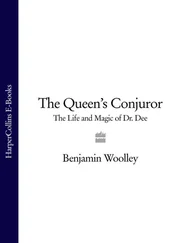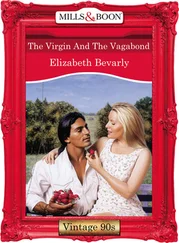The boys were led to the foot of a tree, where they were made to sit, watched by warriors brandishing bastinados. Presently, a guard formed up into two lines facing each other, creating a path leading from where the boys were sitting to another tree. Five young men dressed as priests were allowed to fetch the boys one by one, and lead them along the path. As they went, the guards subjected them to a hail of blows, forcing the priests to shield the boys with their naked bodies, ‘to their great smart’. Once all fourteen boys had been transferred from the foot of one tree to another, this ritualized abduction was repeated, then repeated a third time. Finally, the pummelling ceased, and the guards tore down the last tree under which the boys had been seated, and decorated themselves with its dismembered branches and twigs.
White could not make out what had happened to the boys in the midst of the mêlée, and it was at this point in the proceedings that he was asked to leave. Later, however, he glimpsed them again, somewhere near the torn tree. They were ‘cast on a heap in a valley as dead’. His shock was compounded by Chief Chaopock, standing ‘in the midst’ of them, summoning his warriors to bring wood to build a great pyre, ‘set like a steeple’. White was convinced that these were preliminaries to sacrificing the children ‘to the devil, whom they call Kewase [Okeus], who, as they report, sucks their blood’. 11
Later that day, everyone returned to their houses, as if nothing had happened. Okeus’s work with the Quiyoughcohannock was evidently done, and the frenzied, gruesome mood that had gripped the town was allowed to subside. The smoke of the smouldering town fire carried the wanton spirit away from the houses, through the trees and out on to the river, where it turned towards the bay, following the smell of fresh blood.
On 6 August 1609, a Jamestown settler named John Asbie succumbed to ‘the bloody flux’. His death marked the start of a month of mortality in the English fort.
Sickness and desertion were already rife. Supplies were all but spent. There was nothing left to drink, and in the absence of a working well, the men were forced to use the river, ‘which was at a flood very salt, at a low tide full of slime and filth, which was the destruction of many of our men’. 12
Rations from the ‘common kettle’ were ‘half a pint of wheat and as much barley boiled with water for a man a day, and this having fried some 26 weeks in the ship’s hold’. This put pressure on other sources of sustenance, including Wingfield’s flock of chickens. Only three survived to peck at the hard ground between the frail tents, when they were not being chased by ravenous labourers. 13
Responsibility for this sorry state of affairs has traditionally been laid at the feet of the English class system. Unlike the hard-working, clean-living Pilgrim Fathers who arrived in 1620, the ‘gentlemen’ who made up such a large proportion of Jamestown’s population have been portrayed as work-shy fops and dandies who ‘were used to social strata but not to discipline’, and who preferred the ‘narcissistic contemplation of heredity’ to getting their hands dirty. 14
In fact, most of the gentlemen of Jamestown had military backgrounds, and, while some hated the idea of heavy manual labour, they by no means saw themselves as due a life of ease.
Captain John Smith was himself a gentleman, and proud to be called so, advertising in his autobiography that the title had been endorsed by no less a figure than the King of Poland. 15 Most of the others similarly classified had less heredity to contemplate than even Smith. He, at least, had a ‘competent means’ from his father and the patronage of a prominent member of the English nobility. Many had lived hard lives on the battlefields of the Low Countries, France and Ireland, or on the edge of destitution. Some were quite poor, the family of one military captain, for example, boasting an estate worth just twenty shillings. 16 Perhaps one or two were feckless opportunists who preferred to rely on their charm and wits rather than honest toil to make a living. But their behaviour was a consequence of the relative lack of social privilege, not an excess of it. Similarly, they had not crossed the Atlantic and put themselves in the predicament in which they now found themselves because life at home had been so easy, but because it had been so hard.
Smith’s peers, particularly the squabbling council members, may have contributed to the settlement’s first crisis, but even he acknowledged that the damage they caused was collateral. The origin of Jamestown’s woes, at least in these early stages of settlement, lay in the simple lack of food. Calculations for provisioning the expedition had inevitably erred on the side of stinginess, with enough to cover a two-month crossing, and six more months in America while a planting of crops ripened, the fort was built, and trade relations with the Indians were established. According to this timetable, a harvest would be ready by the time the supplies started to run out, which could supplement, and ultimately replace, food bought from the Indians. 17 Unfortunately, the crossing had taken not two months but five. This triggered a cascade of problems: by the time they arrived, the planting season had been all but missed, so there was no hope of a proper harvest in August; the crews of the Susan Constant and the Godspeed , who were due to return to England, had run out of their own supplies, so had to be fed out of the settlement’s store while Newport reconnoitreed the river. This left the settlers fewer than twelve weeks to acclimatize to their new surroundings and become self-sufficient. 18
Both at the time and since, critics have wondered why they could not live off Virginia’s natural resources, given the abundance apparently at their disposal. Smith, Archer, Percy and countless successors boasted about the fat vines and fruitful trees, the nuts and berries, the deer running through the forest and the rodents scampering in the undergrowth, the sturgeon in the river and the oysters on the shore. Could that not feed a hundred or so men, in the middle of summer? The Indians’ own experience demonstrates otherwise. Hunting, fishing and scavenging, which they performed with astonishing efficiency, provided only a third of their daily needs, averaged out over the year; the other two thirds coming from their staple crop of cultivated corn and beans. The English, being in an alien environment, were bound to rely on a staple crop to provide a much higher proportion of their diet – four fifths at least, which meant finding between one and two tons of corn every week, just to survive. 19
Back in June, there had been hopes that the Indians would make up the deficit. A messenger had arrived at the fort, claiming to be an emissary of the ‘Great Powhatan’. The mamanatowick wanted peace with the English, and ‘desired greatly’ their friendship. Furthermore, he had commanded all attacks on the fort to cease, so that the English ‘should sow and reap in peace’. If any Indians ignored this command, he would, he pledged, ‘make wars upon them with us’. ‘This message fell out true,’ Wingfield later observed, ‘for both those weroances have ever since remained in peace and trade with us.’ It was soon after this that Wingfield had been approached by the Quiyoughcohannock chief Chaopock, promising peace and offering food supplies in the autumn, for which Wingfield offered him his red waistcoat, knowing English clothes to be among the possessions most prized by the Indians.
However, peace with the Indians did not yield the hoped-for influx of food. Skirmishes continued with the Paspahegh, and a high level of mutual suspicion and misunderstanding made trading difficult with more distant towns.
Читать дальше












